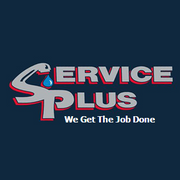
Septic systems offer an effective, environmentally friendly alternative to municipal sewage systems. But to many people, their operation remains a mystery. In the sections below, Service Plus Plumbing, the premier plumbing, drain cleaning, and root removal service in Eastern CT, lifts the veil and explains how a septic system works.
The Septic Tank
 The first step in treating waste with a septic system is to collect solid and liquid waste in a subterranean septic tank. When you flush a toilet or wash laundry, the waste and water enter the tank. Some of the waste sinks to the bottom, while other waste floats. The floating mass creates a barrier that prevents odors from seeping out. Bacteria in the tank feeds on the waste, reducing solids to sludge and treating liquids. Liquid effluent leaves the tank through drainpipes at the top of the tank and enters the drain field.
The first step in treating waste with a septic system is to collect solid and liquid waste in a subterranean septic tank. When you flush a toilet or wash laundry, the waste and water enter the tank. Some of the waste sinks to the bottom, while other waste floats. The floating mass creates a barrier that prevents odors from seeping out. Bacteria in the tank feeds on the waste, reducing solids to sludge and treating liquids. Liquid effluent leaves the tank through drainpipes at the top of the tank and enters the drain field.
The Septic Drain Field
As it leaves the tank, treated liquid effluent travels through long, perforated pipes that allow liquids to seep into the drain field, which in a pipe and stone system, is an underground filtration system comprised of crushed rocks on a bed of sand. The sand and rocks filter the effluent and allow clean water to return to the water table. Problems can arise if water levels become high enough to let sludge enter the perforated pipes, clogging the pipes or the drain field itself. Thus, water economy and regular septic system pumpings are crucial.
Service Plus Plumbing specializes in root removal, water jetting, and pipe inspection to keep your wastewater treatment system operating as it should. For more than 25 years, this fully licensed and insured contractor has served Eastern CT residents, offering swift response times, meticulous service, and unparalleled customer care. Visit their website for contact information, or call (860) 234-9346 to speak with a friendly expert about your septic system needs.
About the Business
(3 reviews)
Have a question? Ask the experts!
Send your question

